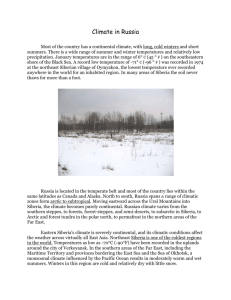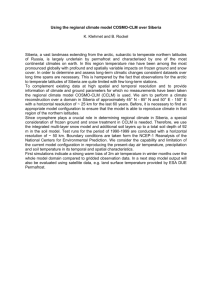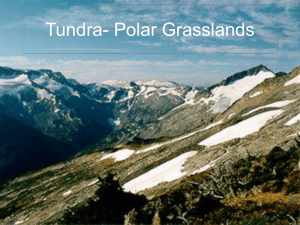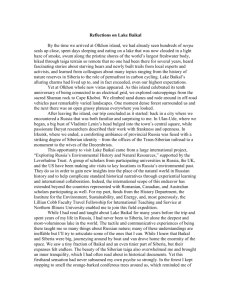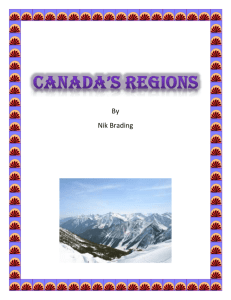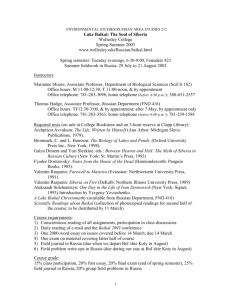Eastern Siberia
advertisement
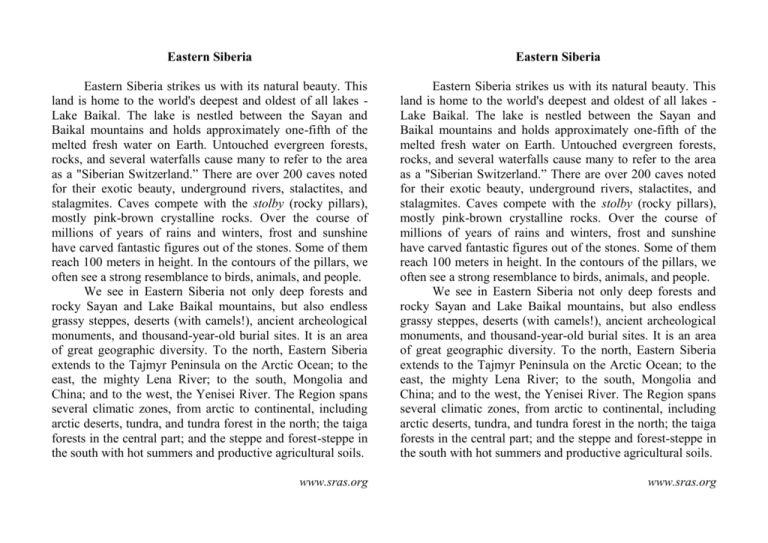
Eastern Siberia Eastern Siberia Eastern Siberia strikes us with its natural beauty. This land is home to the world's deepest and oldest of all lakes Lake Baikal. The lake is nestled between the Sayan and Baikal mountains and holds approximately one-fifth of the melted fresh water on Earth. Untouched evergreen forests, rocks, and several waterfalls cause many to refer to the area as a "Siberian Switzerland.” There are over 200 caves noted for their exotic beauty, underground rivers, stalactites, and stalagmites. Caves compete with the stolby (rocky pillars), mostly pink-brown crystalline rocks. Over the course of millions of years of rains and winters, frost and sunshine have carved fantastic figures out of the stones. Some of them reach 100 meters in height. In the contours of the pillars, we often see a strong resemblance to birds, animals, and people. We see in Eastern Siberia not only deep forests and rocky Sayan and Lake Baikal mountains, but also endless grassy steppes, deserts (with camels!), ancient archeological monuments, and thousand-year-old burial sites. It is an area of great geographic diversity. To the north, Eastern Siberia extends to the Tajmyr Peninsula on the Arctic Ocean; to the east, the mighty Lena River; to the south, Mongolia and China; and to the west, the Yenisei River. The Region spans several climatic zones, from arctic to continental, including arctic deserts, tundra, and tundra forest in the north; the taiga forests in the central part; and the steppe and forest-steppe in the south with hot summers and productive agricultural soils. Eastern Siberia strikes us with its natural beauty. This land is home to the world's deepest and oldest of all lakes Lake Baikal. The lake is nestled between the Sayan and Baikal mountains and holds approximately one-fifth of the melted fresh water on Earth. Untouched evergreen forests, rocks, and several waterfalls cause many to refer to the area as a "Siberian Switzerland.” There are over 200 caves noted for their exotic beauty, underground rivers, stalactites, and stalagmites. Caves compete with the stolby (rocky pillars), mostly pink-brown crystalline rocks. Over the course of millions of years of rains and winters, frost and sunshine have carved fantastic figures out of the stones. Some of them reach 100 meters in height. In the contours of the pillars, we often see a strong resemblance to birds, animals, and people. We see in Eastern Siberia not only deep forests and rocky Sayan and Lake Baikal mountains, but also endless grassy steppes, deserts (with camels!), ancient archeological monuments, and thousand-year-old burial sites. It is an area of great geographic diversity. To the north, Eastern Siberia extends to the Tajmyr Peninsula on the Arctic Ocean; to the east, the mighty Lena River; to the south, Mongolia and China; and to the west, the Yenisei River. The Region spans several climatic zones, from arctic to continental, including arctic deserts, tundra, and tundra forest in the north; the taiga forests in the central part; and the steppe and forest-steppe in the south with hot summers and productive agricultural soils. www.sras.org www.sras.org
